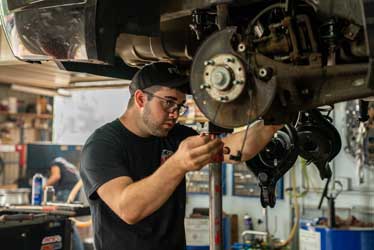All Categories
Featured

[/image]
Routine automobile maintenance is an essential part of vehicle ownership, yet determining just how commonly to set up these exams can in some cases be puzzling. Whether you drive a brand-new car or a high-mileage vehicle, remaining on top of upkeep guarantees security, ideal performance, and a much longer life expectancy for your automobile. In this post, we'll explore the elements that affect solution intervals and exactly how you can develop a routine that benefits you.

- Manufacturer's Standards: Your First Recommendation Factor. Every cars and truck includes a customer handbook, that includes the producer's advisable solution periods. These standards are customized especially to your cars and truck design and its components. Typical suggestions consist of:
Oil adjustments: Every 5,000 to 10,000 miles or 6-12 months, relying on whether you use conventional or artificial oil. Tire turnings: Every 5,000 to 7,500 miles to make certain even use and prolong tire life. Significant services: At landmarks like 30,000, 60,000, or 100,000 miles, which might consist of timing belt replacements, coolant flushes, and transmission servicing. Adhering to the supplier's routine helps preserve your automobile's efficiency and maintains its warranty legitimate.
- Driving Conditions Matter. How and where you drive substantially effects how often your car needs servicing. Automobiles used under "severe driving conditions" may require more regular maintenance. These conditions include:
Frequent short trips under 10 miles. Driving in hefty stop-and-go traffic. Running in severe temperature levels (warm or chilly) Traveling on dirty, muddy, or uneven roads. If any one of these put on your everyday commute, take into consideration setting up more constant oil changes and examinations to protect against wear and tear. 3. Modern Characteristics: Monitoring Your Vehicle's Wellness. Many modern-day automobiles are outfitted with onboard diagnostics and upkeep tip systems. These functions check your automobile's problem in actual time and sharp you when it's time for servicing. Take note of these informs, as they are based on factors like gas mileage, engine efficiency, and oil condition.
- Seasonal Maintenance: Be Prepared Year-Round. Adjustments in weather can influence your car's efficiency, so scheduling seasonal check-ups is a good method.
Before winter season, ensure your battery, tires, and heating unit remain in excellent problem to take care of chillier temperature levels. Prior to summer, check your cooling system, air conditioning, and liquids to avoid getting too hot. Seasonal maintenance keeps your cars and truck trusted and prepared for changing problems.
- Signs Your Automobile Demands Immediate Focus. Sometimes, your automobile might require servicing before the scheduled period. Look for the following indication:
Weird sounds, such as grinding or screeching. Decreased fuel efficiency. Dashboard warning lights, including the check engine light. Difficulty starting the cars and truck or delaying. Resolving these problems without delay can conserve you from expensive repairs later on.
- Benefits of Staying Consistent. Normal maintenance isn't nearly adhering to a routine-- it's an investment in your car's future. It helps:
Maintain you and your travelers safe. Take full advantage of gas performance. Stop pricey malfunctions. Expand the life of your vehicle. Increase resale value by maintaining an extensive service record. Conclusion. Just how typically should you service your vehicle? The response depends on your car's make, your driving behaviors, and ecological conditions.
Latest Posts
Explore WyHy Federal Credit Union – Low Rates for Members
Discover Montclare Auto Repair’s Leading Auto Repairs and Why Drivers Rely On Them
Explore Your Financial Partner at WyHy – Wyoming’s Best Banking Choice for Your Money Goals
More
Latest Posts
Explore WyHy Federal Credit Union – Low Rates for Members
Discover Montclare Auto Repair’s Leading Auto Repairs and Why Drivers Rely On Them
Explore Your Financial Partner at WyHy – Wyoming’s Best Banking Choice for Your Money Goals